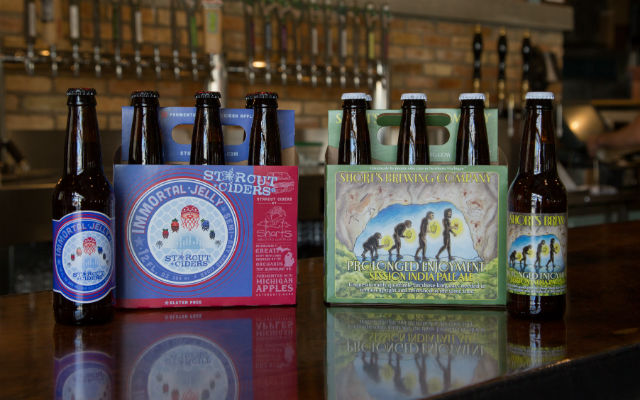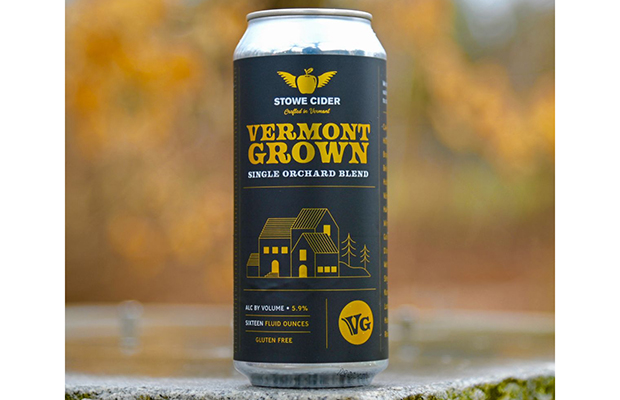
Two cider styles, Imperial Cider and Fruit Cider, are currently performing as Top 5 ‘Total Beer’ styles in multiple reported data sources. The American Cider Association is pointing to the recent growth of Imperial Cider as an example of how leveling the playing field for standards of fill supports innovation in the cider category. In 2020, the ACA successfully lobbied for the addition of 12 oz. packaging to wine’s approved standards of fill. Because cider is federally regulated as wine, this change made cider above 7% alcohol by volume (ABV) in a 12 oz. can or bottle legal for the first time. Two years later, Imperial Cider is trending and is currently the #3 growth style in Total Beer per IRI. Imperial Cider is a marketing phrase that typically refers to a product over 8% ABV.
“When we launched the first coined ‘Imperial Cider’ in 2010 with our Bad Apple Cider, it immediately resonated with craft consumers,” said Lee Larsen, CEO and Founding Cidermaker of 2 Towns Ciderhouse. “Since then, we have seen tremendous growth in the Imperial category after the 2021 launch of our canned Imperial Cosmic Explorer line. Our Cosmic Crisp Imperial Cider is the No. 1 imperial cider SKU in the nation according to IRI, which has helped to drive an over 800% growth in our imperial sales volume compared to 2020.”
Schilling Cider, another category leader in Nielsen and in IRI, introduced Excelsior Apple in 2018. It was one of the first Imperial Ciders to come in a six-pack. Over 93,000 cases of Excelsior Apple have sold in the latest 52-week period.
Today, Schilling Cider, Austin Eastciders, 2 Towns Ciderhouse and others all have multiple flavor offerings of Imperial Cider in their product lineup.
As of early October, ciders over 8% ABV were up 112% in Nielsen-measured retail channels versus the same time last year. Seven of the ten most-selling regional cider brands in off-premise channels over the last 13-weeks include Imperial Cider in their core product offerings. 2 Towns Ciderhouse, Schilling Cider Company and Bold Rock Cider lead the pack, according to 3 Tier Beverages—all three sell Imperial Cider.
“It’s super exciting to see this style of cider performing so well over the last 52-weeks in IRI and Nielsen,” said Lester Jones, chief economist of the National Beer Wholesalers Association and a member of the ACA’s data insights committee.
And it’s not just Imperial Cider that is topping the charts. Casey Baxter of Blake’s Hard Cider Co., an ACA member cidery in Michigan shared, “Imperial Cider and Fruit Flavored Cider are both top 5 (#3 & #4 respectfully) growth styles for Total Beer in US Food the last 52-weeks. It is our responsibility to make sure this is getting talked about and Cider receives the credit it deserves right now.” Blake’s fruit flavored cider brands represent 16% of the $9.69 Million style growth for the style. They launched their first Imperial Cider—American Apple—in August.
Michelle McGrath, executive director of American Cider Association, is not surprised that the market responded to Imperial Cider. “It’s amazing how the uneven regulations get in the way of innovation and thus growth,” she said. “Packaging, carbonation, geographic indicators, labeling—cider is extremely restricted in what it can and can’t do in these areas, unlike beer and FMBs.”
ACA’s successful campaign for 12 oz. packaging was a win for all styles of cidermakers, as cider may naturally ferment above 7% ABV depending on the apple’s sugar levels for a particular harvest. For example, out of Sonoma County, California is Dutton Estate Winery. Their cider is made from a blend of local heirloom Gravenstein and Golden Delicious apples, is 7.4% ABV and comes in a 12 oz. can. Or Far West Cider, another California-based cidery, offered a seasonal cider named Chonessey Bowie at 8.1% ABV in a 12 oz. can. Chonessey Bowie was a native-fermented, can-conditioned estate-grown Pink Lady apple cider. Or ANXO Cider out of Washington DC which ferments its apple-driven products to dry and packages everything in cans.
“The impacts are wide-reaching,” shared McGrath. “We were very pleased when the TTB adopted the ACA’s request for 12 oz. packaging. It was a win for undiluted apples and for innovation. To see our request validated by the market is even better.”
The ACA has submitted formal petitions to the TTB for 16 oz. and 19.2 oz. packaging to be added to wine’s approved standards of fill and is actively pursuing many other inequities that cider faces, such as daunting carbonation taxes. “Co-ferments are getting a lot of attention, but bubble taxes are limiting their potential,” added McGrath. “We are working to change that. There is no reason a fruit cider shouldn’t be bubbly.”






Be the first to comment